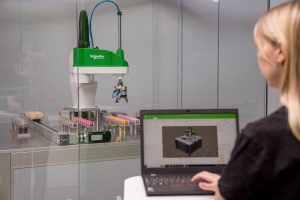Industrial operations today are faced with many challenges. Aging and new workforces, new regulatory requirements and the pace of change in a flat world economy that requires a flexible way to meet business challenges. The advent of software for the purpose of industrial automation, information, asset and operations management is the key to meeting the needs of the modern enterprise. This is the first in a series of blogs where I will explore some of the history behind this and speak about why it is important for industrial operations to continue to make healthy investments in their software technology to remain competitive in the marketplace.
How did we get here?
Electrical and electronics technology have been key staples for industrial operations since the 1950s. In the beginning there were relay boards that acted as the nerve centre for industrial operational assets. On the shop floor electronic circuit boards would perform calculations, and control actuators and sensors were used to improve production consistency and keep workers and operational assets safe.
The configuration of these technologies was largely through the manipulation of physical circuits and electromechanical devices. Systems were improved through trial and error, where one operating asset having been built and operated acted has a guinea pig for the next operation that could benefit from mistakes made and lessons learned. Engineers were designing for failure mechanisms and, in fact, would over engineer a particular device or process to ensure maximum reliability and uptime.
Energy prices were not that high in relation to the cost of raw materials and labor costs. Due to geo politics, individual markets were more self-contained. In addition, product lifecycles were very long and a company could be very successful with only a few product lines so long as they would re-evaluate things every one to two years and make adjustments.
What’s so different about the world today?
Today the world is much different. The control loop which was designed as a mechanism to control the input and output of any machine, system or process has grown up. The expectation is that machines at the line level will execute in milliseconds, the local operation will be coordinated at every second and the enterprise will be able to react to changes within minutes.
Energy costs in some industries are now being treated as a precious raw material which is allocated per production unit and conserved. Baby boomers who have made up the majority of the industrial workforce for the past 30 years are now retiring in droves. Every time somebody retires the approach is to investigate whether the job can be off shored or automated out. In developing countries the issue is around a brand new workforce with less experience, but with the same level of operational and quality expectations.
The cost of capital to build industrial assets has also gone up, requiring engineers to scrutinize design and operations to cut any cost possible, while at the same time ensuring maximum safety and uptime. Operators are expected to be able to retool on a regular basis to handle new products and improve revenues of existing products to meet consumer and business demand.
Why is software the key to success in an industrial environment?
Software is the fluid medium that allows companies to be agile enough to remain competitive. Mechanical and electronic devices meet the need to control operations and produce finished goods, however software is so amazingly flexible, configurable and modifiable, a company that does not leverage it, will find itself at a severe disadvantage versus the competition. Furthermore, software today embodies much more – it is capable of embedding human intelligence and business knowledge to solve a diverse set of business challenges and solve problems across the entire supply chain. In addition, the number of platforms available to leverage and interact with software has increased considerably – from cell phones, to mobile devices, to tablets, to wearable devices, and and list goes on and on. This provides for more powerful workflow coordination, optimization and productivity.
Software development is also taking leaps and bounds. In the early days programmers would use numeric keypads to program instructions into chips. Then came software development programs and compilers, allowing for easier manipulation of software functions. More recently with the advent of object oriented programs software became more configurable where small programs can be created and automatically generate similar programs with little additional effort. Development processes have also matured from a “waterfall” approach for large developments where it might take one of two years, to “agile” processes were smaller functionalities are created more frequently for a system and therefore made available to users very quickly.
How can today’s industrial businesses leverage software?
Modern software spans the timeframe from when an operating asset is built, including when it is commissioned and through to it running on a day-to-day basis. Design tools use sophisticated mathematical models that take into account material strength, thermodynamic characteristics and the dynamics of the material used in the process. This results in a perfectly designed machine, processing line or operational asset that is the safest, lowest cost, most efficient and easiest to maintain. Those same models used in the design of an operating asset can also be used when running it to optimize the process and allow owners and operators to take advantage of new business opportunities as they present themselves.
The control room has evolved from a series of screens and computers that provided information on everything that was happening in the process to an environment where operations personnel get the information that they need at the right time and in the right format to do their jobs. And this can happen anywhere they are located.
Together, Schneider Electric with the addition of Invensys is changing the game for software. The combination of the software from the two companies provides a unified framework and a suite of function-rich applications that deliver tangible value and optimized business processes across specific vertical solution sets, linking together operating assets, people and processes to improve competitive advantage.
How will you leverage an enhanced software portfolio?



Conversation
Thanks
Very interesting blog.
In modern industries, “Software” must be an integral part of it to grow bigger, retrospect the happening, future improvements of their systems.
This one thing is very important when it comes to making useful software that is advanced.
Design tools use sophisticated mathematical models that take into account material strength, thermodynamic characteristics and the dynamics of the material used in the process.